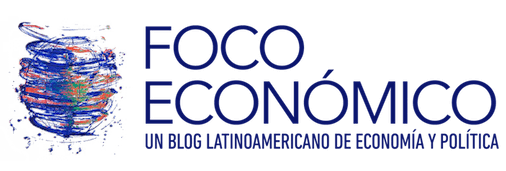The problems associated with the current wave of migration into Europe has put the debate about migration policy back at the top of the public agenda. Similar discussions will no doubt take place during the coming year as the United States gears up for its next presidential elections. Opinions and sentiments cover the entire range of the spectrum, from the humanist approach of advocates of a world without borders to positions that are rooted in racism and xenophobia. Here, instead, we will look at the issue from a political economy standpoint.
Let’s begin by taking a quick look at the available evidence. At the risk of oversimplifying the findings of economic historians who have studied the waves of mass migration from Europe to America that took place in the nineteenth and early twentieth centuries, there appears to be evidence that differences in standards of living (real wages) was the key determinant in most people’s decisions to migrate and that migration contributed to the convergence of living standards on the two sides of the Atlantic Ocean (see, for example, Taylor and Williamson, 1997, and O’Rourke and Sinnott, 2003). More recently, a number of economists have noted that, while sharp differences in product prices across countries are rare, gaping wage differentials across countries are commonplace (see, for example, Rodrik, 2002, and Freeman, 2006) and that this can be accounted for by the existence of free trade in goods alongside severe constraints on the mobility of labor. Some economists have now reached the point where they see restrictions on the international mobility of the workforce as being the greatest distortion in the world economy of today (Clements, 2011).
From a theoretical standpoint, there is a great deal that needs to be explained and reworked. First of all, in a world with very low barriers to merchandise trade, why are incentives to migrate still in place? In a model of international trade in which factor prices tend to equalize, once countries open up their economies, such incentives should cease to exist. One obvious reason why factor prices might not converge is that countries have differing levels of productivity because, for example, they use different technologies or have better or worse institutional structures.
Second, what economic impacts does the international mobility of workers have on host countries and countries of origin? Three mechanisms in this regard are discussed in the literature. One of them has to do with the fact that domestic workers and immigrants can be complementary. Foreign baby-sitters or nannies, gardeners and domestic servants can help to drive down the prices of non-tradeables for engineers, doctors and other professionals in the host country. If this is the case, then both domestic workers and immigrants would stand to gain from a more open migration policy. A second mechanism is one in which immigrants compete with domestic workers and therefore exert downward pressure on wages. Certainly many developing-country engineers, doctors and the like will find it attractive to migrate to richer countries, which will push down the wages of their local-resident colleagues. A third mechanism, which is more closely associated with the literature on economic geography, has to do with economies of scale. In a world of rising returns and transport costs, the free mobility of labor exerts a centrifugal force that tends to produce economic concentration. In this type of scenario, domestic workers in rich countries may have a preference for lower barriers to mobility.
Third, why have rich countries erected such formidable barriers to immigrant workers while accepting and even promoting free trade? There is a huge body of literature on the political economy of trade policy, and one of the standard explanations it offers for the existence of international trade barriers is that sectoral interest groups that benefit from protectionism are such a powerful lobby. Trade agreements could alleviate this problem. However, very little attention has been devoted to the political economy of migration. Worse yet, what we have learned about trade policy does not seem to be readily applicable. In many rich countries, the most powerful lobbies appear to be the groups that would benefit the most from a relaxation of barriers to migrants (entrepreneurs, highly skilled workers). But the barriers remain. One possible reason is that the elite classes in rich countries fear that the entry of many new poor workers will lead to a huge expansion of the welfare state.
In a recent study (Galiani and Torrens, 2015) we developed a very simple model that can be used to explore a number of the questions that we have just raised. Our point of departure is a Ricardian world. If countries engage in trade, product prices tend to converge, but wages do not because different countries use different technologies. The combination of the convergence of product prices and the non-convergence of wages results in differences in living standards (real wages) that generate incentives to migrate. In the absence of any restrictions on the international mobility of people, workers in poor countries will emigrate until the point is reached where real wage levels are the same everywhere. The predictions that can be derived from the Ricardian model are surprisingly plentiful. International trade can induce partial convergence or divergence in real wages across countries, but when trade is combined with the free mobility of people, then total convergence occurs.
The political economy of this Ricardian world is also intriguing. Not surprisingly, since there is only one factor of production, international trade does not generate any distributional effects. Consequently, all members of the population in all countries prefer to engage in trade. However, workers in rich countries prefer to restrict the entry of workers from poor countries. Each worker that emigrates from a poor country to a rich country lowers wages in the host country and raises wages in the country of origin. In economic terms, the migration of workers results in a decrease in the host country’s terms of trade and an increase in the terms of trade of the country of origin. In short, a political equilibrium in this Ricardian world leads to free trade and a complete restriction on international labor mobility.
While remaining in this Ricardian world, we can make a whole range of modifications without altering the main conclusions (non-tradeable goods, a continuum of goods, North-South trade with non-homothetic preferences, an Eaton-Kortun multi-country extension of the model, etc.). We also explore two changes that do change the conclusions. First, we introduce an extractive elite. Since this elite is concerned not only about wages but also about the number of workers that it can exploit, it may prefer to have free labor mobility. Second, we introduce increasing returns to scale in one sector of the economy. In this case, members of the labor force in a rich but sparsely populated country may be in favor of allowing foreign workers to immigrate so that they can take advantage of economies of scale.
In closing, a few words about institutions, economic performance and factor mobility are called for. There is an extensive body of literature on political and institutional economy that emphasizes the importance of institutions in accounting for cross-country differences in economic performance and levels of development. Once factor mobility is taken into account, however, those conclusions may change significantly. For example, in a world with free factor mobility, institutional differences would be expected to lead to a concentration of economic activity in the areas having the best institutions, but not in differences in living standards between those areas. On the other hand, in a world with restrictions on factor mobility, institutional differences would indeed be likely to give rise to differentials in living standards.
Bibliography
Clements, Michael A., 2011. “Economics and Emigration: Trillion-Dollar Bills on the Sidewalk?”, Journal of Economic Perspectives, 25(3):83.106.
Freeman, Richard, 2006. “People Flows in Globalization”, Journal of Economic Perspectives, 20(2):145-170.
Galiani, Sebastian, and Gustavo Torrens, 2015. “The Political Economy of Trade and Labor Mobility in a Ricardian World”, NBER Working Paper No. 21274.
O’Rourke, Kevin, and Richard Sinnott, 2002. “What Determines Attitudes Towards Protection? Some Cross-Country Evidence” in Brookings Trade Forum 2001, Susan Collins and Dani Rodrik (eds.), Washington, DC, Brookings Institution.
Rodrik, Dani, 2002. “Feasible Globalization”, Working Paper No. 9129, National Bureau of Economic Research (NBER).
Taylor, A., and Jeffrey Williamson, 1997. “Convergence in the Age of Mass Migration”, European Review of Economic History, 1(1):27-63.





















